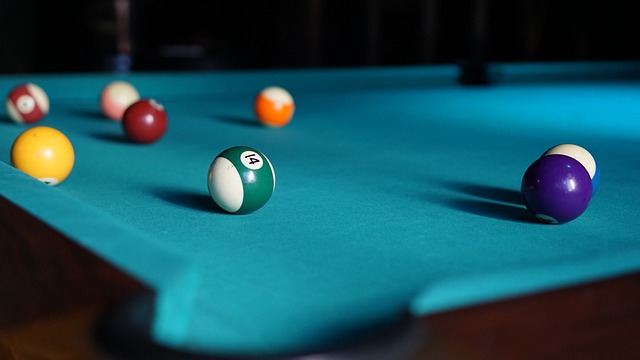Pool tables differ significantly in weight, with 1-piece designs typically ranging from 600 to 800 pounds (272-363 kg) due to their monolithic slate and metal frame construction. In contrast, 3-piece tables weigh between 400 and 600 pounds (181-272 kg) with separate components, offering better portability despite matching 1-piece models' weight when fully assembled. "How heavy is a pool table?" depends on construction type, with slate material influencing weight distribution based on design—either integrated for heavier 1-piece tables or modular for lighter 3-piece alternatives.
“Wondering about the weight difference between a 1-piece and 3-piece slate pool table? This comprehensive guide delves into the intricate details behind pool table construction, offering a clear comparison. Weighing the differences is crucial for buyers, as it impacts setup, portability, and stability.
From the sturdy integrity of 1-piece designs to the modular efficiency of 3-piece models, each has its advantages. Explore factors like material composition, construction techniques, and assembly methods that influence weight, ultimately guiding you in determining the ideal pool table for your needs, based on how heavy is a pool table.”
- Understanding Pool Table Construction: 1-Piece vs 3-Piece Design
- Weighing the Differences: A Comparative Analysis
- Factors Influencing the Weight of a Pool Table
Understanding Pool Table Construction: 1-Piece vs 3-Piece Design

Pool tables come in various designs, but two common types stand out based on their construction: 1-piece and 3-piece. Understanding the weight difference between these two is essential for anyone considering purchasing a pool table. The 1-piece design, as the name suggests, features a single, solid structure where the slate top is seamlessly integrated with the legs and frame. This monolithic construction contributes to its significant weight—typically ranging from 600 to 800 pounds (or 272 to 363 kilograms). The dense slate top, often weighing alone between 450 to 600 pounds (around 204 to 272 kg), is supported by a robust frame that adds to its overall heft.
In contrast, the 3-piece pool table design offers a more modular approach. It consists of three separate components: the top slate, legs, and a separate support structure or cabinet. While this design provides benefits in terms of portability and assembly, it generally results in a lighter table. The weight distribution allows for easier manipulation and transport compared to its 1-piece counterpart. This is why 3-piece tables usually weigh between 400 and 600 pounds (around 181 to 272 kg), making them a popular choice for those seeking a more manageable pool table without compromising on quality or playability.
Weighing the Differences: A Comparative Analysis

When comparing a 1-piece and 3-piece slate pool table, one of the primary factors to consider is weight. In general, a full-size 1-piece slate pool table can weigh anywhere from 650 to 800 pounds (294-363 kg). This substantial weight is due to the solid slate construction and the heavy metal frame that supports it. The one-piece design means all these components are integrated into a single, robust unit.
In contrast, a 3-piece slate pool table is designed for easier transport and assembly. Each section—the head, foot, and middle—can weigh approximately 200 to 300 pounds (91-136 kg) individually. This lighter design allows for disassembly, making it more convenient for moving or storing. However, the overall weight of a 3-piece table when fully assembled can still rival that of a 1-piece table due to the thickness and quality of the slate.
Factors Influencing the Weight of a Pool Table

The weight of a pool table varies significantly depending on several factors. One key differentiator is the construction material used, with slate tables generally being heavier than those made from other materials like wood or composite surfaces. Slate, known for its durability and smooth playing surface, adds considerable weight to the overall structure.
Another factor influencing weight is the number of pieces in the table. As the name suggests, a 1-piece slate table has a solid, integrated design, contributing to its heavier weight. In contrast, a 3-piece table features separate legs and a playing surface, allowing for easier transport and assembly but resulting in a lighter overall mass due to the division of components.
In terms of weight, the primary distinction between a 1-piece and 3-piece slate pool table lies in their construction. A 1-piece design, as the name suggests, features a single, solid slate, making it generally heavier due to the concentrated mass. Conversely, a 3-piece table comprises three separate sections, allowing for easier transport but resulting in a lighter overall weight. When considering how heavy a pool table is, these differences are paramount, especially for folks navigating tight spaces or requiring frequent relocation.
